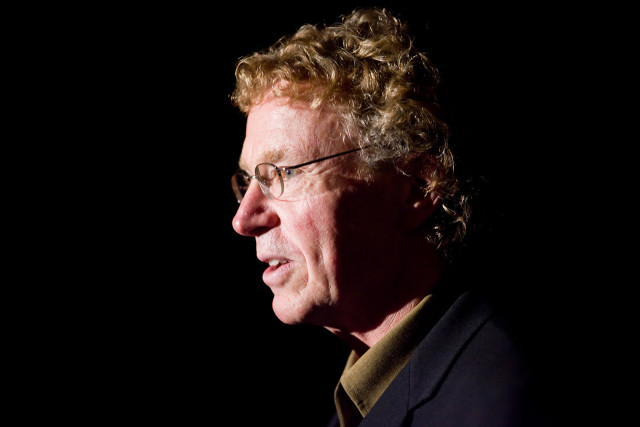The Inner Ear(shot)

John Gilbreath, the man who brings the music.
Photo: Daniel Sheehan, EyeShotJazz.com
John Gilbreath didn’t create the Earshot Jazz Festival; the template was set when, newly arrived in Seattle, he volunteered as an usher in 1990, the festival’s second year. In 1991 Gilbreath joined Earshot’s board. Later that year he became its executive director. He’s guided what’s become one of the nation’s leading (and more eclectic) jazz festivals, together with scores of year-round concerts and educational programs, ever since, while hosting an even wider-ranging radio show, The Caravan on KBCS, 91.3 FM.
Both moves—to Seattle and to a life serving jazz—marked a sort of homecoming. “In the mid-1960s, I was a maladjusted teenager in Minnesota. My father lived out here, and I came out to visit him.” Young Gilbreath joined the city-sponsored Jazz Workshop atop Queen Anne and played drums in a combo led by renowned (and now deceased) trumpeter/saxophonist Floyd Standifer.
The drums fell by the wayside; Gilbreath returned to Minnesota and a sensible career as a construction estimator and project manager (skills that seem handy keeping a midsize arts organization afloat). But the love of music lingered, and “I always felt like I was pointed back here. I was approaching 40, and I felt my life was going in one direction and my work in another.” He ditched the work and followed his bliss to Seattle.
Jazz has meanwhile suffered its own midlife identity crisis. “There’s an increased supply and decreased demand,” muses Gilbreath. “That’s one way jazz has become classist, if not racist. The jazz audience in general is eroding, especially the black and women audiences.” The official culture, exemplified by Wynton Marsalis and Ken Burns’s PBS documentary, freezes jazz in place as “America’s classical music”—a sure buzzkill. But more musicians are playing more adventurously, drawing more widely and pushing more boundaries, than ever. “The word jazz is just a slippery thing right now, getting so diffuse. It means so many things to so many people.” So what’s the essential quality that makes music jazz? “I’d say it has to have elements of improvisation. Beyond that it gets didactic.”
Earshot tries to embrace those many meanings with a program ranging from European opera/cabaret to a kora-based quintet, a “stunning” Norwegian-Australian trio, an ex-poet laureate reciting to instrumental accompaniment, and hometown heroes, Garfield High’s renowned jazz band. And that’s just the first two nights in a three-week festival.
Want to know Gilbreath’s personal picks for this year’s festival? Click here.
